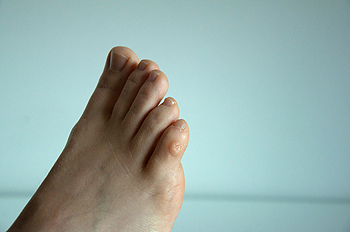
Corns on the feet are hard thickened dots of skin caused by pressure and friction. Corns are small dots of toughened skin, with a tiny hard kernel inside of them. They are commonly found on the toes, largely as the result of wearing shoes that do not fit correctly. The toe rubs against the side or top of the shoe and a corn begins to form. Deformities, such as bunions and hammertoes, can contribute to the formation of a corn. Wearing high heels that compress the toes and cause extreme pressure may also be a factor. Corns will not go away on their own, especially if the condition that caused them is not removed. Treating a corn yourself is not recommended, as infections can develop. Seeing a podiatrist is highly suggested instead. The podiatrist can remove the hardened skin in a safe and sterile setting and prescribe custom orthotics depending on the cause of the corns.
If you have any concerns regarding your feet and ankles, contact one of our podiatrists of Romeo Foot & Ankle Clinic. Our doctors will treat your foot and ankle needs.
Corns: What Are They? and How Do You Get Rid of Them?
Corns can be described as areas of the skin that have thickened to the point of becoming painful or irritating. They are often layers and layers of the skin that have become dry and rough, and are normally smaller than calluses.
Ways to Prevent Corns
There are many ways to get rid of painful corns such as wearing:
- Well-fitting socks
- Comfortable shoes that are not tight around your foot
- Shoes that offer support
Treating Corns
Treatment of corns involves removing the dead skin that has built up in the specific area of the foot. Consult with Our doctors to determine the best treatment option for your case of corns.
If you have any questions please feel free to contact our offices located in Washington and Shelby Townships, MI . We offer the newest diagnostic and treatment technologies for all your foot and ankle needs.
